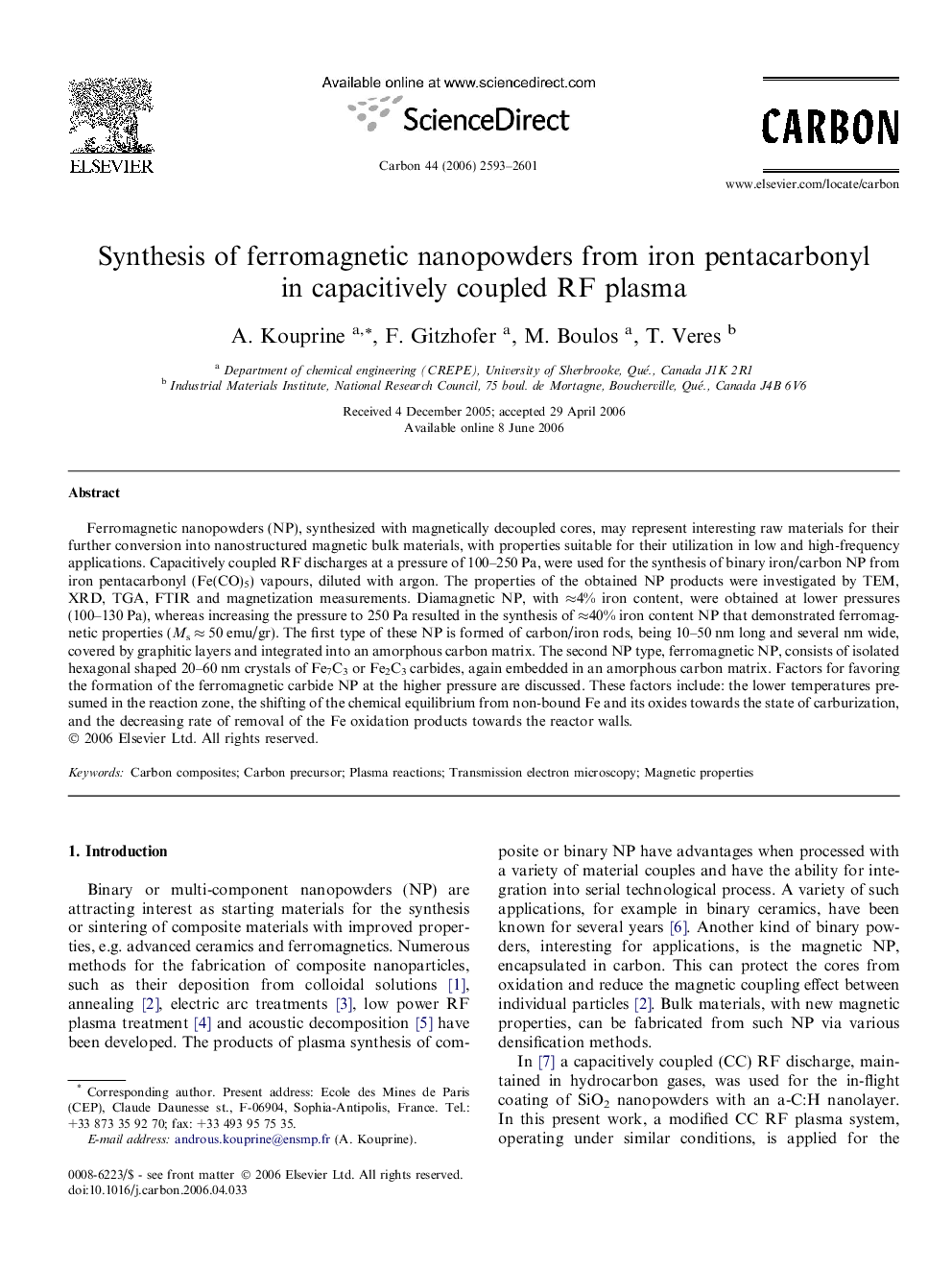| Article ID | Journal | Published Year | Pages | File Type |
|---|---|---|---|---|
| 1419662 | Carbon | 2006 | 9 Pages |
Ferromagnetic nanopowders (NP), synthesized with magnetically decoupled cores, may represent interesting raw materials for their further conversion into nanostructured magnetic bulk materials, with properties suitable for their utilization in low and high-frequency applications. Capacitively coupled RF discharges at a pressure of 100–250 Pa, were used for the synthesis of binary iron/carbon NP from iron pentacarbonyl (Fe(CO)5) vapours, diluted with argon. The properties of the obtained NP products were investigated by TEM, XRD, TGA, FTIR and magnetization measurements. Diamagnetic NP, with ≈4% iron content, were obtained at lower pressures (100–130 Pa), whereas increasing the pressure to 250 Pa resulted in the synthesis of ≈40% iron content NP that demonstrated ferromagnetic properties (Ms ≈ 50 emu/gr). The first type of these NP is formed of carbon/iron rods, being 10–50 nm long and several nm wide, covered by graphitic layers and integrated into an amorphous carbon matrix. The second NP type, ferromagnetic NP, consists of isolated hexagonal shaped 20–60 nm crystals of Fe7C3 or Fe2C3 carbides, again embedded in an amorphous carbon matrix. Factors for favoring the formation of the ferromagnetic carbide NP at the higher pressure are discussed. These factors include: the lower temperatures presumed in the reaction zone, the shifting of the chemical equilibrium from non-bound Fe and its oxides towards the state of carburization, and the decreasing rate of removal of the Fe oxidation products towards the reactor walls.
